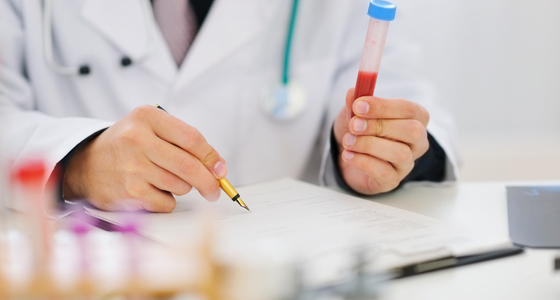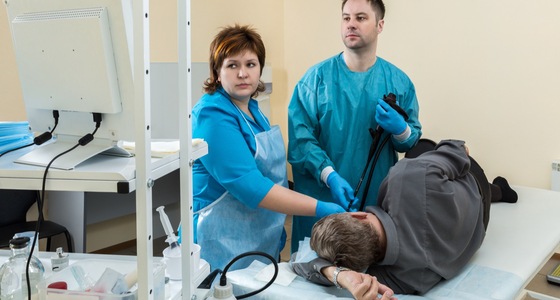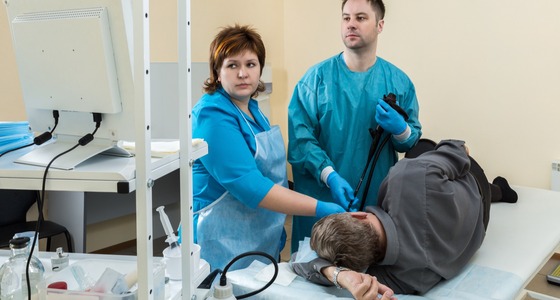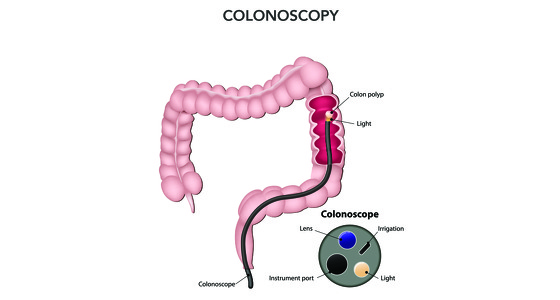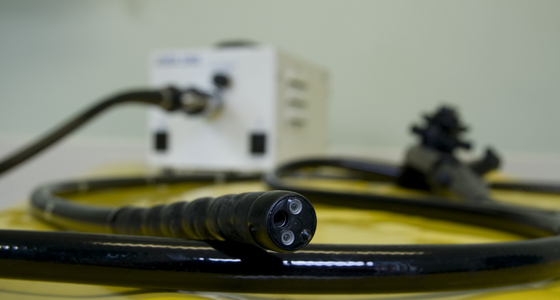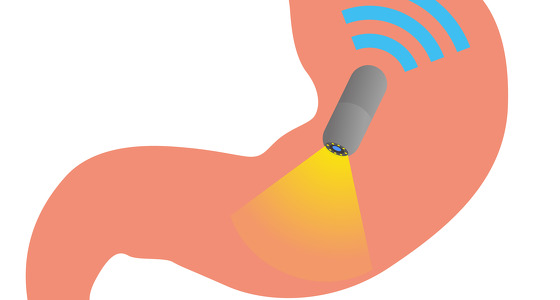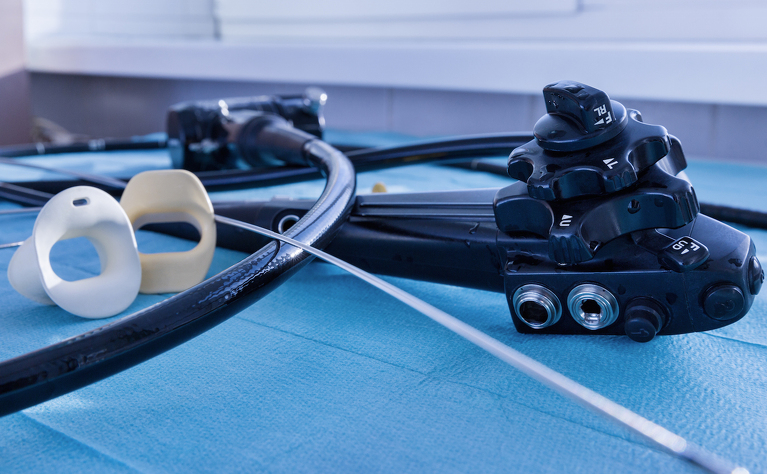
A sigmoidoscopy is a type of endoscopy test which examines the inside of the rectum and the first part of the colon (the sigmoid colon).
A sigmoidoscopy is a tube with a light and telescopic camera at one end. The tube may be either flexible or rigid.
The examination is very similar to a colonoscopy but it only examines the lower part of the colon. The sigmoidoscope is carefully inserted into your anus and images from inside your colon are transferred onto a screen for your healthcare professional to view.
You may be given a sigmoidoscopy if you are experiencing inflammatory bowel disease (IBD)-type symptoms as part of the diagnosis process. It is used when IBD (Crohn's disease or ulcerative colitis) in the left side of the colon and/or rectum is suspected.
Sigmoidoscopies may also be carried out as part of the ongoing monitoring of your IBD to check inflammation levels and any signs of bowel cancer. People with IBD in their colon can be at a slightly higher risk of developing this type of cancer.
If you have IBD in your colon then you should have regular endoscopies to monitor the inflammation and the extent of your disease and to also check for any signs of bowel cancer. Your doctor will advise you on how often it is necessary for you to have these done.
A sigmoidoscopy is usually carried out in hospital by a specially trained doctor or nurse. Unless you are already staying at hospital you will probably be seen as a day-case meaning you do not need to stay overnight. Sedatives or painkillers are not usually used for sigmoidoscopies, however speak to your doctor if you feel you may need one.
The procedure itself only lasts around 10-20mins, however you may be in hospital for a few hours.
You will be asked to lie on your left-hand side and the sigmoidoscope will be carefully fed through your anus and through your sigmoid colon. Air will be blown into your colon so that it expands to aid the passage of the sigmoidoscope. As the sigmoidoscope is passed through you may need to move position or the doctor/nurse may press on your abdomen. This is to help the passage of the sigmoidoscope and to get the clearest pictures possible.
During the procedure biopsies may be taken to be examined.
After the procedure the doctor or nurse may discuss some of the findings with you, or you may be given a follow-up appointment. If biopsies have been taken then the results of these may not be available for several weeks. The results will be sent back to your doctor/consultant who can discuss them with you.
You should be able to go home the same day.
If you have had any sedatives you will not be able to go home until the effects have worn off (usually several hours).
If you are having a sigmoidoscopy to aid diagnosis of inflammatory bowel disease (IBD) then the doctor or nurse will be looking at the lining of your colon and rectum to see if there are any signs of Crohn’s disease or ulcerative colitis. They will also check for signs of bowel cancer or other conditions which may be causing your symptoms.
If you have already been diagnosed with IBD then the sigmoidoscopy will be used to check and monitor the extent and level of inflammation in your large bowel, and also to monitor for signs of bowel cancer.
Different people have different experiences of sigmoidoscopies. You may find it uncomfortable but if you nervous about it or experience pain or discomfort during the examination inform the doctor or nurse.
Your doctor or nurse will advise you on exactly how they want you to prepare, but an outline of what to expect is given below.
The left side of the colon needs to be clear for the images from the sigmoidoscope to be clear. This can usually be done using an enema (a liquid placed into your anus). The enema will cause you to need the toilet around 15 minutes after it is inserted. You may be able to do this at home or at the hospital.
Sometimes you may be required to take strong laxatives (bowel prep) the day before the examination. The laxatives will give you diarrhoea so you may want to make sure you are able to stay close to a toilet during this time. You should continue to drink clear fluids (such as water or squash) to prevent yourself from getting dehydrated as a result of the diarrhoea.
The laxative is often provided as a liquid for you to drink at home and some people do not like the taste.
You may be asked to stop taking some medication such as warfarin, aspirin or clopidogrel, as well as painkillers such as ibuprofen and iron tablets.
Preparing your colon ready for the examination can be unpleasant and time-consuming, however, it is necessary to ensure the intestinal lining can be viewed clearly. If your bowel isn’t completely clear and the endoscopist isn’t able to see your full bowel during the procedure then you may have to come back for another endoscopy.
Sigmoidoscopies are generally very safe procedures, but there is an extremely small risk of bowel perforation during the examination by the sigmoidoscope or other instruments. You may want to discuss the risk with the physician performing the test.
Immediately afterwards you may feel bloated or uncomfortable and you may bleed a little from your back passage if you have had any biopsies taken. These side effects should pass quickly.
After returning home you should go to hospital straightaway if you experience bleeding from you back passage, have a swollen abdomen or pain that gets worse, feel weak or develop a fever.
